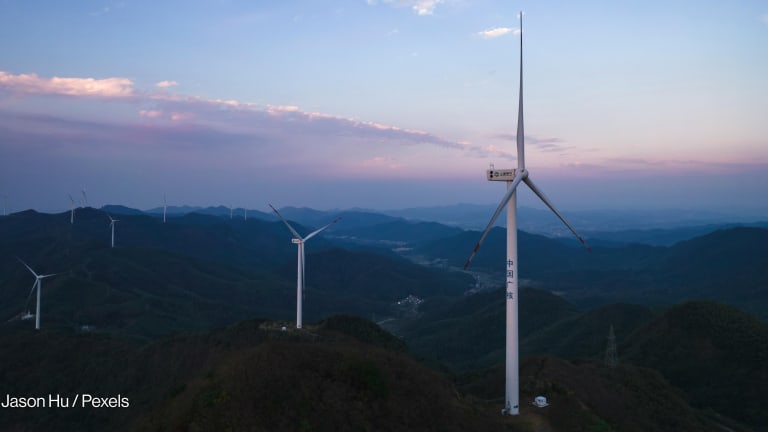Is it time for India to step up as a climate donor?
Developed nations want India, China, and Middle Eastern countries included on the climate donor list, arguing that global climate goals can only be achieved if major emitters and economic powers share the burden.
This year’s 29th United Nations Climate Change Conference, or COP29, assumes particular significance for India as negotiators are hoping to establish a new climate finance goal dubbed the new collective quantified goal on climate finance or NCQG. India is among the nations pushing to raise the earlier annual global climate finance goal that high-income countries should pay to lower-income countries from $100 billion to $1 trillion by 2030. Climate experts in the country hope that with its climate vulnerabilities, India will receive more funding after this goal is established but there is pressure from developed nations to expand the list of donors, potentially making India a contributing country rather than a recipient. The Bonn climate talks, held in June and considered the foreground for COP29, ended in a deadlock after developed nations pushed for India, China, and Middle Eastern countries to be included on the donors list. The existing donors also wish to limit the beneficiaries to only the least-developed countries, or LDCs, and island states. This they argue is because the scale of the finance being demanded is now much higher than in the 1990s when the current donor list was established and some developing nations have become wealthier since then. In a document submitted as part of the NCQG negotiations, the European Union argued that “the collective goal can only be reached if parties with high GHG-emissions and economic capabilities join the effort.” Currently, 23 countries are obligated to provide climate finance, including the EU, the United States, and Japan. Climate activists in India argue that it is too soon for India to join this list. "The contributor list should be expanded but not the way the EU is asking. They cannot create the problem and then ask emission reducers to pay back,” Sanjay Vashisht, director of Climate Action Network South Asia, said. “India [and] China can contribute voluntarily but should not be made liable." Last year, India contributed $1.28 billion in climate finance to its neighboring LDCs. Donor dilemma The debate over expanding the list of donors is particularly concerning for India, which faces significant climate-related challenges. Erratic rainfall, extreme heat, and rising sea levels are already affecting the country. In 2019, think tank Germanwatch ranked India seventh among countries most affected by climate change, in terms of fatalities and economic losses. Estimates show that the country will need $170 billion annually to achieve its nationally determined contribution, or NDC, under the Paris Agreement, or roughly $2.5 trillion between 2015 and 2030. Activists argue that this shows that the country should be receiving more support. “Just because our GDP is growing does not mean we are in a position to commit to donate. We are in a highly vulnerable situation ourselves,” said Neha Khanna, senior manager of the green and sustainable finance practice at the Climate Policy Initiative, which is a global nonprofit research and advisory institution working on climate finance and energy transition. “Being an LMIC [low- and middle-income country], we cannot afford this. Anyway, our per capita emissions are too low for us to be asked to donate.” India is among the fastest-growing economies in the world. Its gross domestic product is now ranked fifth in the world, up from 17th in the early 1990s. Though it is now the world’s third largest greenhouse gas emitter, it has the lowest emissions per capita in the Group of 20 emerging economies. Some experts have also expressed concern that focusing on donor eligibility could divert attention from urgent climate goals. “This is not the time for discussions on expanding the donor base. If we wish to keep global temperature rise under 1.5 degrees Celsius, we cannot derail the NCQG timeline. This is our last window before it is too late,” Avantika Goswami, a climate change program manager at the Centre for Science and Environment, a New Delhi-based public interest research organization, told Devex. In a recently released paper, Goswami wrote: “Raising the donor list issue as a response to developing countries’ quantum proposals is a strategic distraction and a shirking of responsibility by the Global North.” She stressed that 47 emerging markets and developing economies are at risk of defaulting on their loans if they only prioritize climate goals. If this pressure continues and there is no sufficient debt relief, these countries will be forced to limit their expenditure on other important economic priorities. India’s climate funding strategy Even if India dodges the campaign to include it in the list of climate donors, there are concerns about how it allocates the funds it does receive. The country’s climate finance strategy is still evolving. At COP27 in Egypt, India submitted its long-term low-emission development strategy or LT-LEDS stating that by 2030, 50% of the country’s electric power installed capacity will come from nonfossil sources. But the country “currently lacks a comprehensive climate finance strategy for mobilizing the capital required to execute on the LT-LEDS,” wrote Aniruddh Suri, a climate expert. Another concern is that the climate funding India gets is mainly used on mitigation efforts while little attention is being paid to adaptation or the process of adjusting to the current and future effects of climate change. Currently, climate adaptation in India is under-represented in policy, finance, and innovation with lifetime investments in all adaptation sectors totaling $899 million while mitigation investments totaled $4.7 billion in 2023 alone. “India should push more for adaptation finance and more funds for loss and damage. A balance between mitigation and adaptation is the need of the hour,” Raju Pandit Chhetri, a climate finance expert from Nepal and a senior research associate at ODI Global, a U.K.-based think tank, said. Experts say a clear, integrated approach, which balances mitigation and adaptation funding, encourages private sector participation, and ensures that climate financing reaches the most vulnerable will be critical for India to meet its climate goals. This story was produced as part of the 2023 Climate Change Media Partnership, a journalism fellowship organized by Internews' Earth Journalism Network and the Stanley Center for Peace and Security. Devex maintains full editorial independence.
This year’s 29th United Nations Climate Change Conference, or COP29, assumes particular significance for India as negotiators are hoping to establish a new climate finance goal dubbed the new collective quantified goal on climate finance or NCQG.
India is among the nations pushing to raise the earlier annual global climate finance goal that high-income countries should pay to lower-income countries from $100 billion to $1 trillion by 2030.
Climate experts in the country hope that with its climate vulnerabilities, India will receive more funding after this goal is established but there is pressure from developed nations to expand the list of donors, potentially making India a contributing country rather than a recipient.
This article is free to read - just register or sign in
Access news, newsletters, events and more.
Join usSign inPrinting articles to share with others is a breach of our terms and conditions and copyright policy. Please use the sharing options on the left side of the article. Devex Pro members may share up to 10 articles per month using the Pro share tool ( ).
Cheena Kapoor is a Delhi-based independent journalist and photographer focusing on health, environmental, and social issues. Her work has been published by The Guardian, The Telegraph, Reuters, BBC, and Al Jazeera, among many others. Her long-term project "Forgotten daughters" about abandoned women in Indian mental asylums has been widely published and exhibited across Europe. Follow Cheena on Twitter and Instagram.








